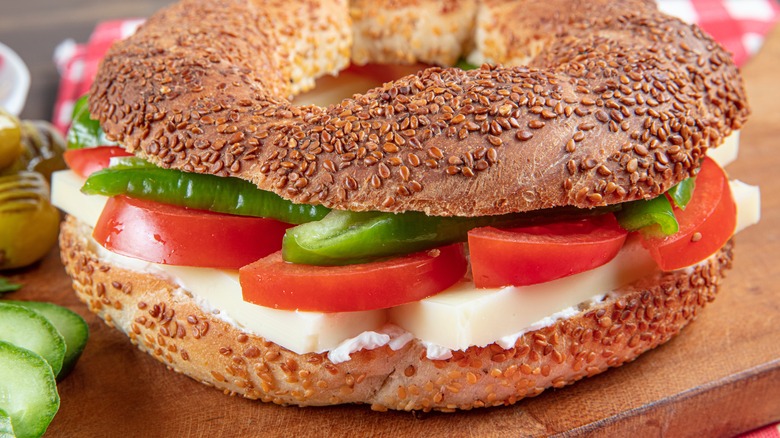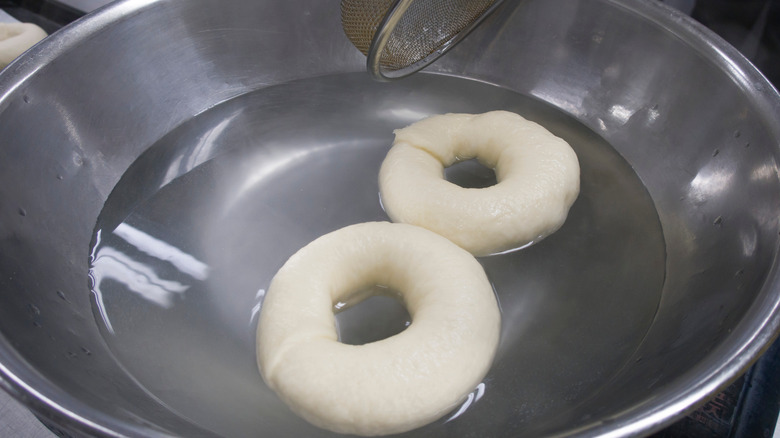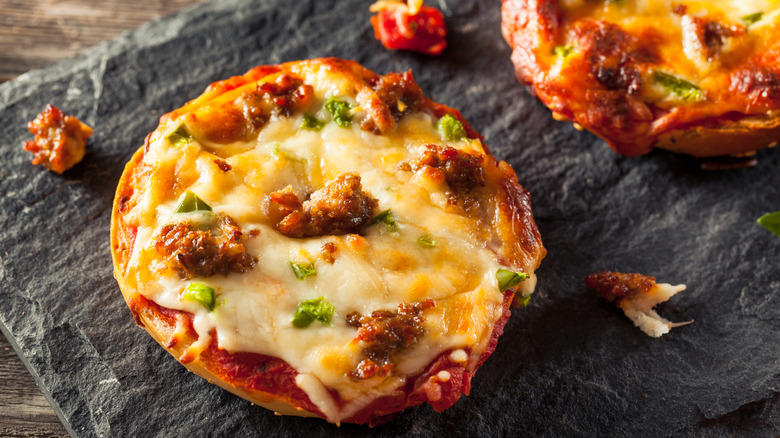The Secret To A Bagel's Golden Baked Color Is In Your Pantry Right Now
Bagels are a breakfast and brunch staple, especially in the northeastern United States. They're delicious by themselves or toasted and spread with butter and cream cheese. You can get them plain, or covered in herbs and spices (everything bagel, anyone?) or made with garlic. But unless you live near an excellent bakery, chances are good that the bagels you've had aren't the real thing.
As food writer Calvin Trillin explained in his book "Alice, Let's Eat," he was very proud when his daughter Abigail tasted a bagel in Kansas City and said, "Daddy, how come in Kansas City the bagels just taste like round bread?" And there's truth in that.
A true bagel has a slightly sweet edge. It's dense, chewy, and toasty, and it doesn't taste anything like regular bread. And it's beautifully browned and crisp. While your homemade bagels may taste wonderful, they're probably not as deeply golden brown as you'd like. But that's fixable.
Baking soda is the key to well-boiled bagels
The standard recipe for bagels is much like a bread recipe. Both feature bread flour, water, yeast, a bit of sugar to get the yeast going, and eggs. The dough is firmer than it is in many bread recipes, though. And once the ingredients are mixed and kneaded, the differences come into play. When bagels are formed and left to rise again, they're boiled. That's where their texture gets a boost.
The boiling step (called kettling in the industry) gelatinizes the starch on the surface of the bagel, which helps it brown and turn into a crisp crust in the oven. But that browning needs a boost — and the boost comes from baking soda.
Baking soda is alkaline, which means it has a pH higher than 7. And that alkalinity speeds up the Maillard reaction. The Maillard reaction is a chemical reaction, also known as non-enzymatic browning. Sugars and proteins in the dough start to break down in heat and recombine with each other, creating brown and flavorful compounds that produce that wonderful crust. Add a teaspoon of baking soda to bagel-boiling water and watch the magic unfold.
Beautifully browned bagels
Once your bagels have risen and have been boiled, it's time to get them into the oven. To get them even browner, with a shiny crust, you can brush them with saltwater or a beaten egg. (Be gentle with this step, as you don't want to mar your bagel's perfect burgeoning crust.)
Now that you have your bagels, what are you going to do with them? First, they freeze beautifully. Cut them in half, wrap each half in foil, and freeze for up to a month. Thaw in the fridge, then toast and eat.
You can eat them smeared with cream cheese and topped with lox, or make pizza bagels, which are a great snack or light lunch. Or try an NYC bacon, egg, and cheese sandwich, a hearty breakfast to get you through the day. And salmon, avocado, and bagel eggs Benedict recipes are the perfect choice for Sunday brunch.


